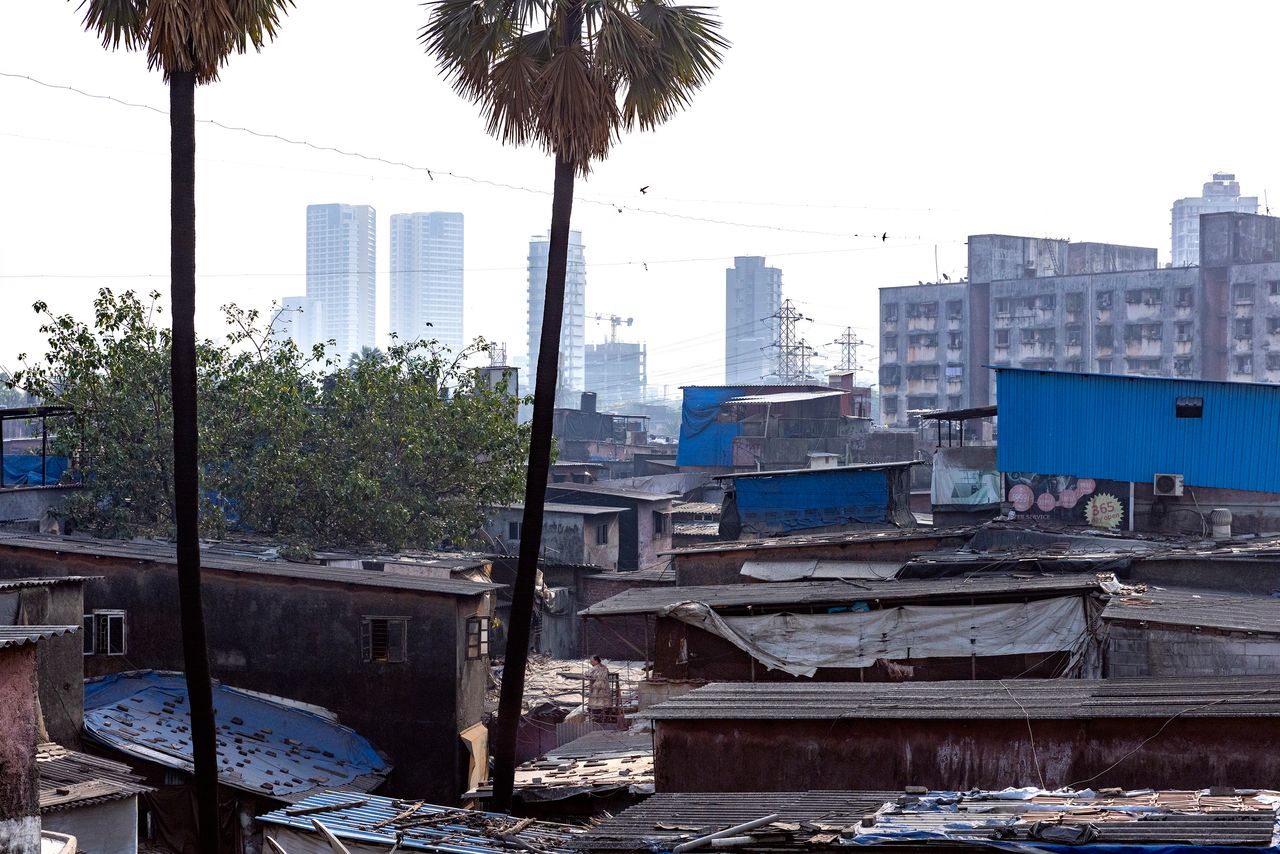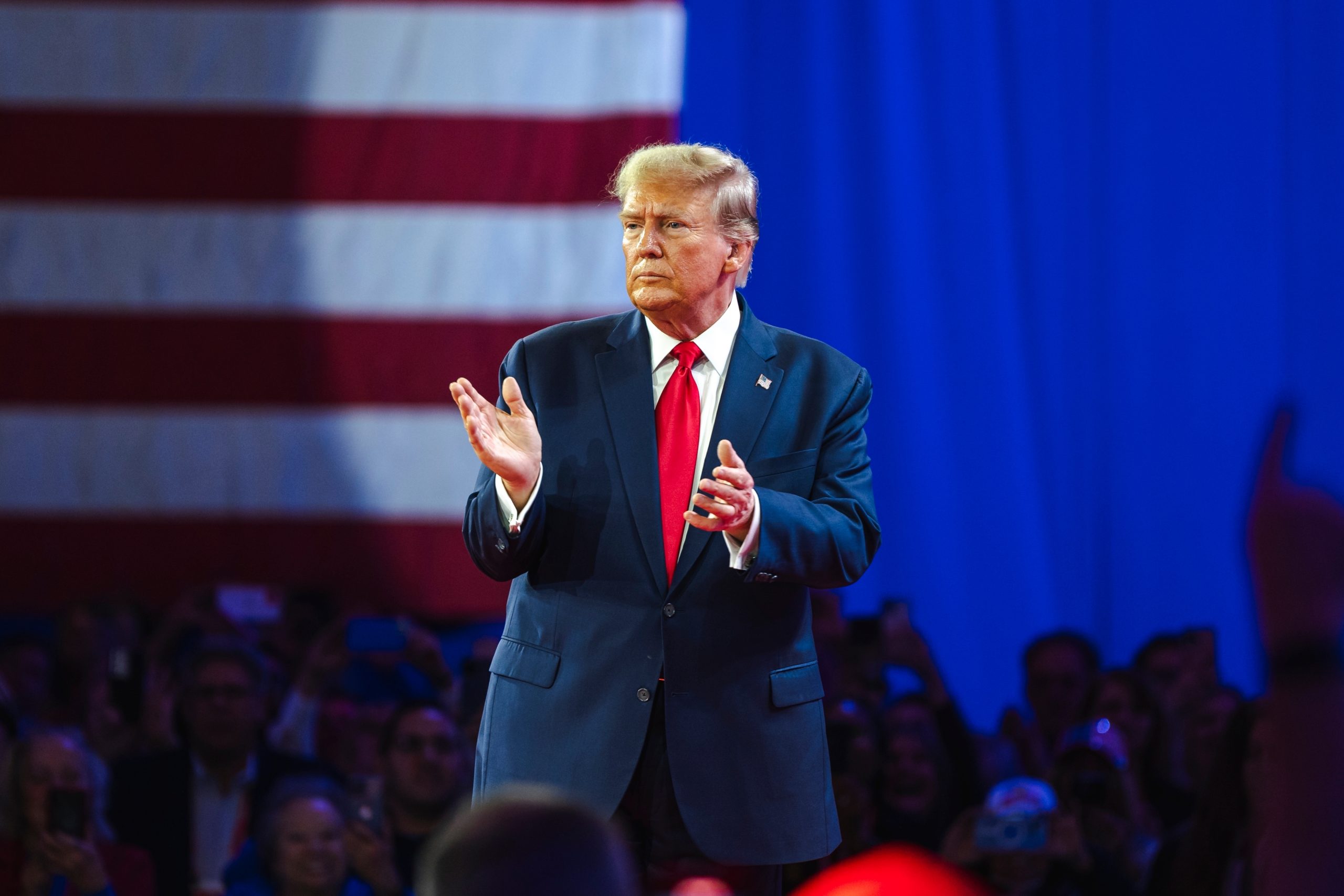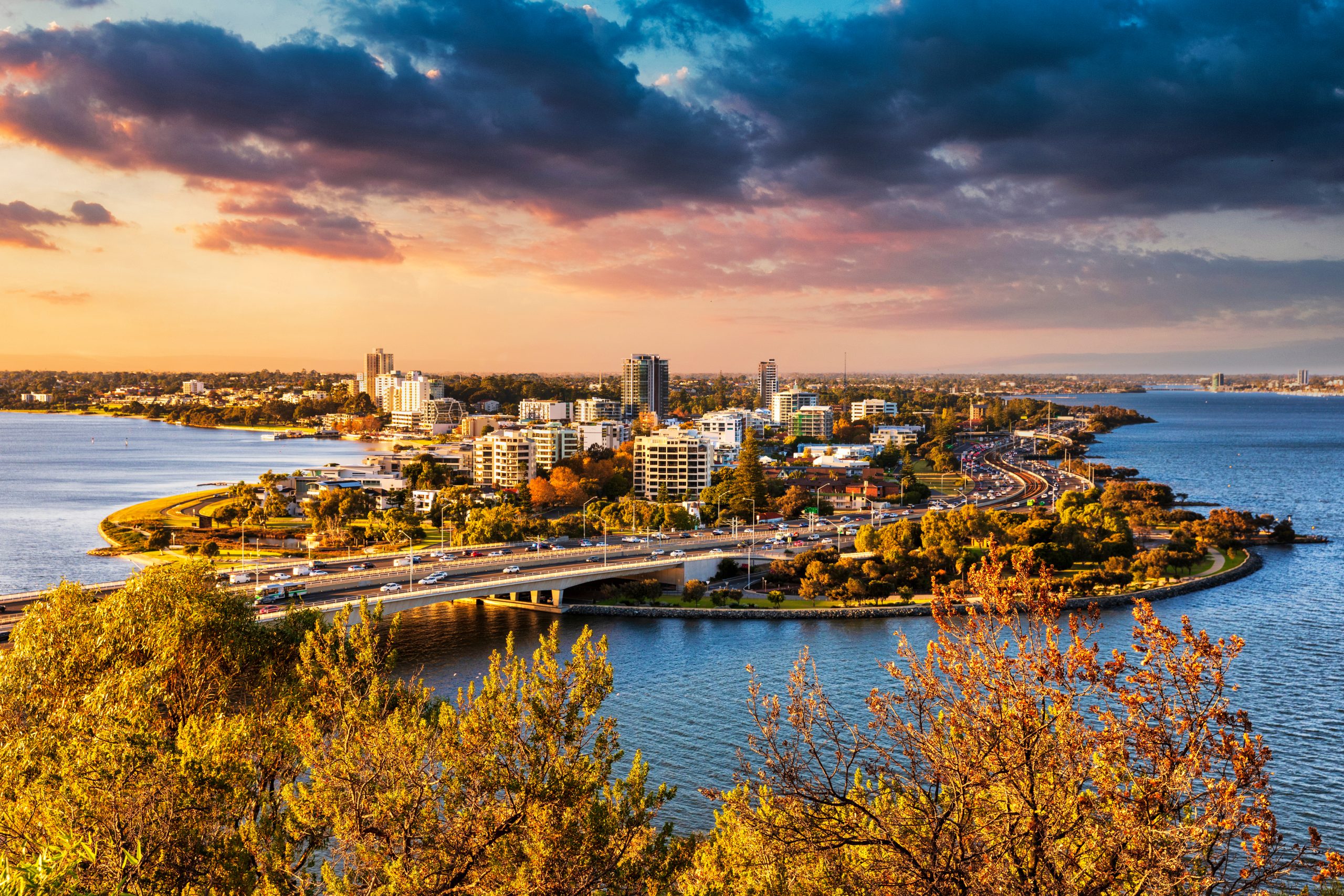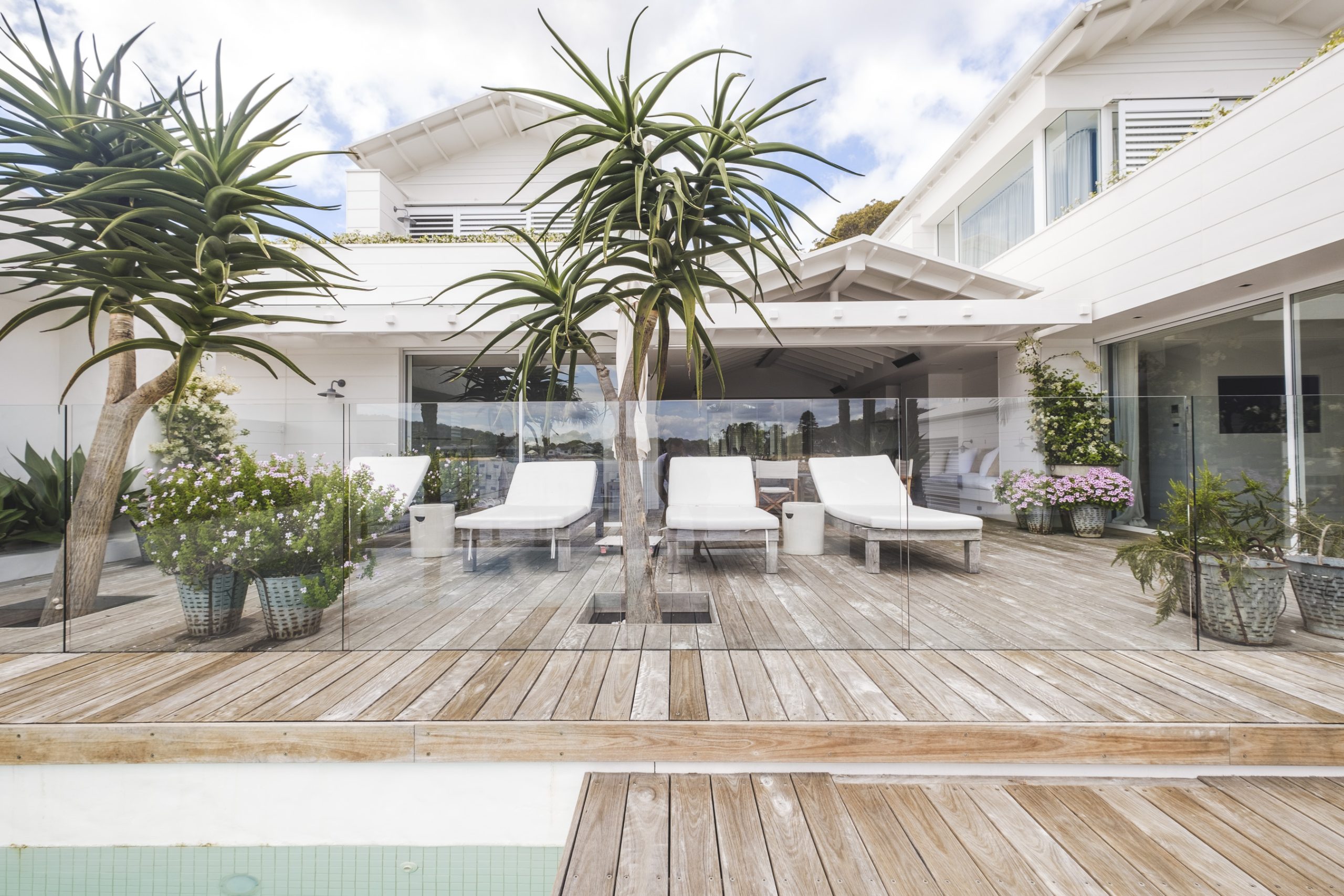India’s Gautam Adani Wants to Redevelop Giant Slum From ‘Slumdog Millionaire’
Billionaire’s Adani Properties is expected to get contract to replace narrow streets and shanties of Dharavi in centre of Mumbai
MUMBAI—Billionaire Gautam Adani has become India’s largest airport operator. He runs coal mines and the country’s largest private port. Now he has set his sights on a massive redevelopment of India’s most iconic slum.
Dharavi, a slum in the centre of Mumbai, gained international fame after being featured in the 2008 Oscar-winning film “Slumdog Millionaire.” It was well known to many Indians long before that, and the city of Mumbai has had plans to replace its shanties with gleaming high-rises for nearly 20 years.
The complexities of relocating the estimated one million people who live and work in an area about two-thirds the size of New York’s Central Park have so far thwarted those efforts. Dharavi is a city within a city. Redeveloping it in the middle of Mumbai will be akin to razing a section of Manhattan—but a far more densely packed version.
The developer will need to house all of those people during construction. Businesses will be disrupted. There will be disagreements about compensation. Protests are expected. Costs will mount.
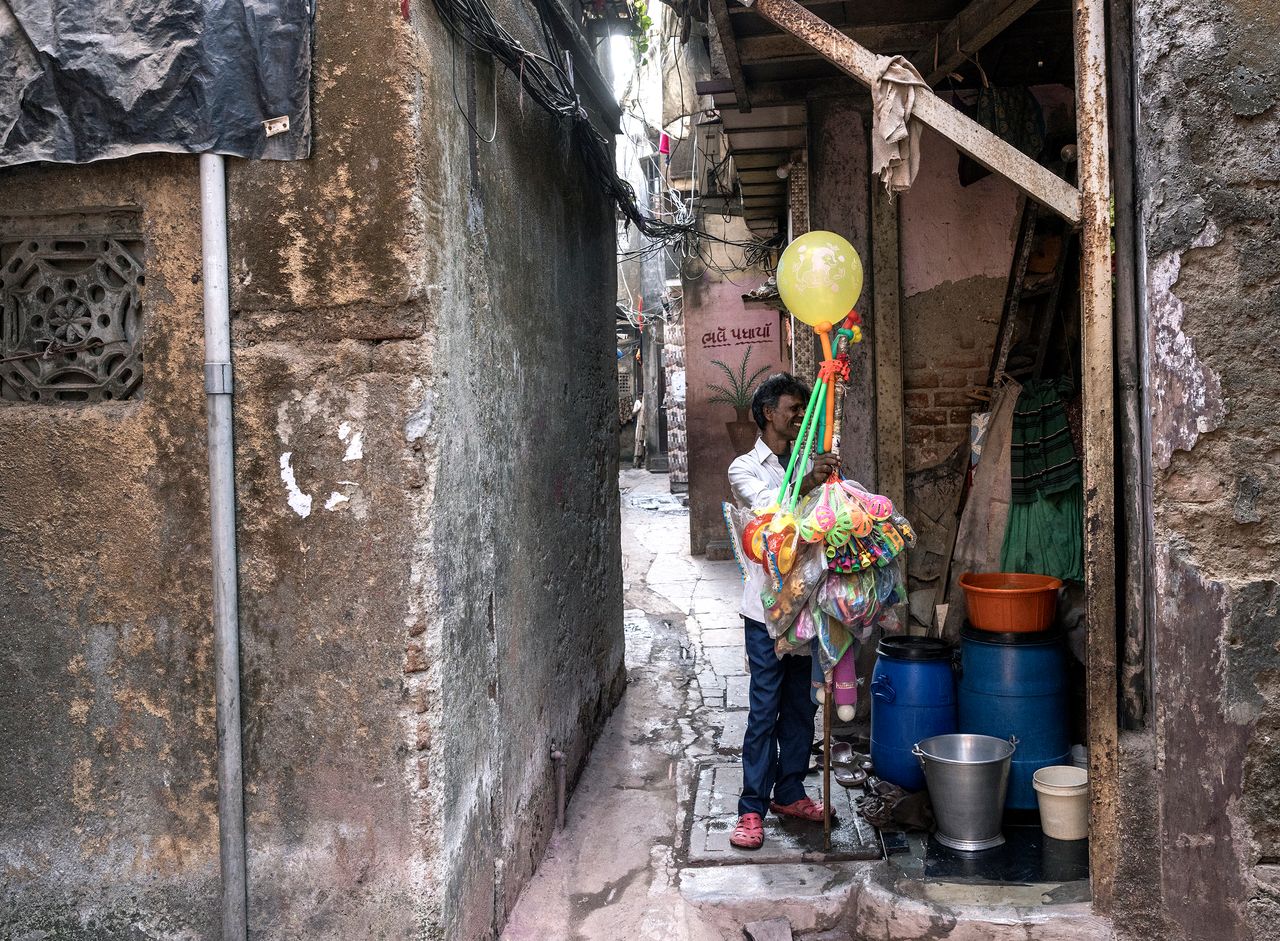
Thousands of people who live on rent in Dharavi fear that once high-rises come up, the rents will rise sharply, forcing them to move out. “They will remove the poor, not the poverty,” said Mohammed Giasuddin Riaz Ansari, a 46-year-old who has lived in Dharavi for more than 20 years.
Mr. Ansari shares a 300-square-foot rented room with 14 men of his extended family, and makes a living selling toys and balloons in the lanes of Dharavi. He said he manages to save $25 to $35 a month to send to his wife and five children who live in a village in Bihar, one of India’s poorest states. If he has to relocate, he said he would have to build his clientele from scratch. “For anyone with a business, this is not good,” he said.
Mr. Adani, who runs a business empire ranging from infrastructure to energy, has had his hands full lately with a dispute of an entirely different nature. His conglomerate, Adani Group, has come under tremendous market pressure since U.S. short seller Hindenburg Research alleged stock price manipulation in its listed companies. The Adani Group has disputed the allegations, but seven listed Adani companies have lost more than $100 billion in stock market capitalisation since the report came out. Adani and his family members said they have prepaid nearly $2 billion of loans since February.
Some of those wary of the redevelopment have questioned whether the financial pressure on Mr. Adani will strain his ability to finish such a massive project. “How will he do it? Who will give him the money?” said Raju Korde, an activist who has in the past protested against Dharavi redevelopment plans.
Mr. Korde said those who live in the slum worry that if Mr. Adani runs out of money and the project drags on for years, many in the slum will get fed up and leave, something that has happened in other redevelopment projects. “There are thousands of people in Mumbai who have given up their rights,” said Mr. Korde. If need be, those who live in Dharavi will protest, he said.
City officials aren’t concerned about Mr. Adani’s ability to finance the project, said S.V.R. Srinivas, metropolitan commissioner of the Mumbai Metropolitan Region Development Authority, a government body in charge of infrastructure development. The city estimates the redevelopment project could end up costing more than 200 billion rupees, equivalent to $2.4 billion.
Adani Properties Pvt., a unit of Adani Group, made the highest bid for an initial investment of about $615 million for the redevelopment, and the government is expected to formally award the contract to the company soon, Mr. Srinivas said. The developer would be responsible for any additional costs required to complete the project.
“It will be a first huge step toward slum-free Mumbai,” Mr. Srinivas said. The government has been trying to find a developer who would take on the work since 2004 but hasn’t been able to find them because of the complexity of the project, he said.
Slums such as Dharavi have flourished in large cities of many developing countries, where people come from rural areas to look for work but don’t find affordable housing. More than one billion people live in slums worldwide; in India, they make up half of the urban population, according to the World Bank.
Homes in Dharavi are so densely packed that they are separated by winding lanes barely 3 feet wide in many places. On a recent afternoon, children played in the lanes, rats scurried along the sides, and women sat on the doorsteps of windowless homes.

A typical home in Dharavi is just a room, about 10 feet by 12 square feet, with anywhere from two to five residents. They rely on public toilets, with 50 to 60 people on average per toilet, according to some estimates. Some homes are made of corrugated metal sheets and tarpaulin, but many residents have invested to build concrete walls and roofs. As families have grown, they have built rooms on top of existing ones, using scrap materials, wood and plastic.
The redevelopment plan requires that the builder make new homes, with more space and private toilets, and give them free to those who meet the government’s eligibility criteria, which includes, among other things, that they must have been living in a Dharavi home that existed before Jan. 1, 2000. In addition, Dharavi will get wider roads and be hooked up to utilities such as water, gas and a sewage system, according to the government’s tender.
In return, the developer gets the right to build residential and commercial buildings on prime real estate. Next door to Dharavi is the Bandra-Kurla complex, one of India’s most expensive office markets, where the U.S. Consulate is located and global banks such as Standard Chartered PLC and BNP Paribas SA have offices.
The new homes for those who live in Dharavi must be ready within seven years under the government’s plan, while the developer has 18 years to build the commercial and residential property that will be sold on the open market, said Mr. Srinivas.
Local real-estate experts say these timelines are ambitious. “It is not going to be a cakewalk that they will start and everything is…smooth,” said Pankaj Kapoor, founder of Liases Foras Real Estate Rating and Research Pvt in Mumbai. “There would be agitations, there would be resolutions, and then it will take its own prolonged time.”
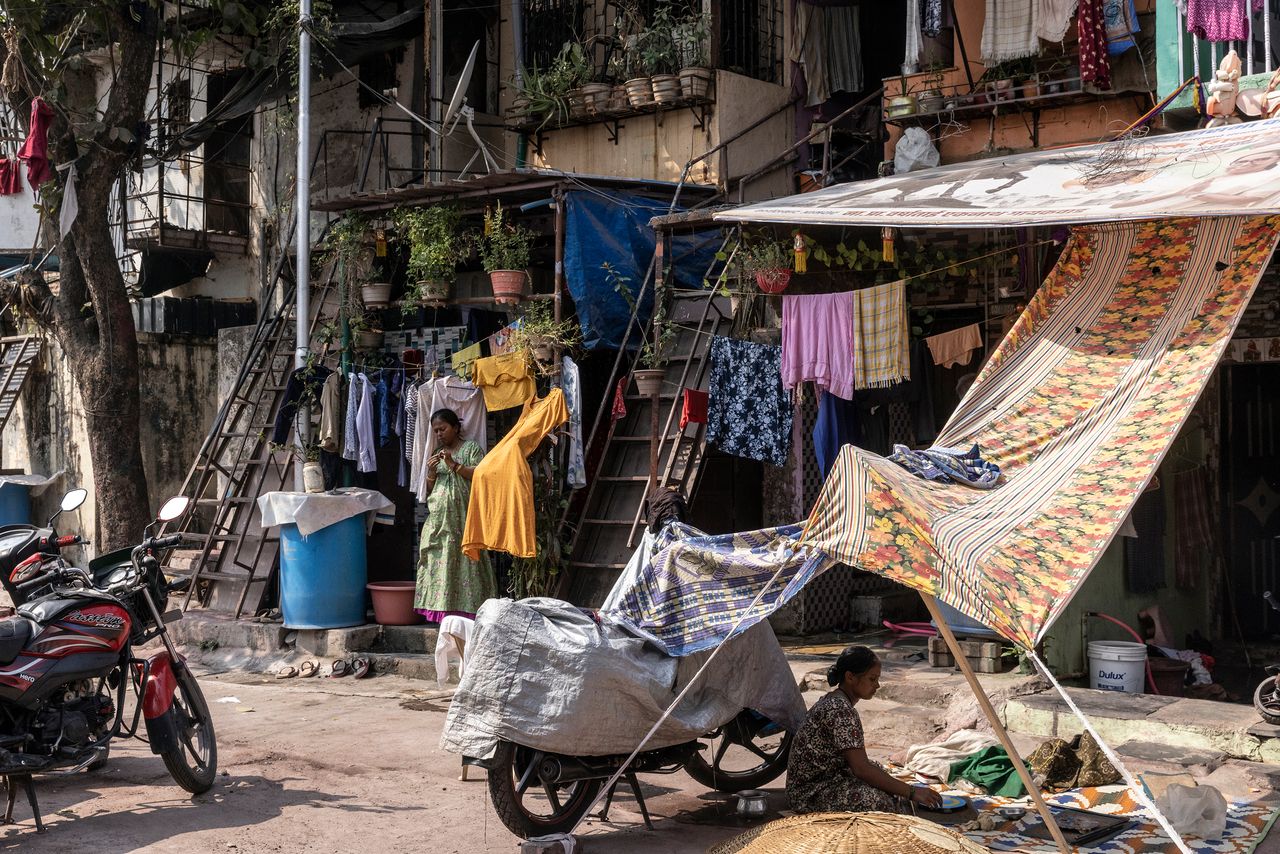
Beyond the complexities of compensating and housing Dharavi’s people, the project is also facing legal challenges. In 2019, a consortium led by a Dubai-based company, Seclink Technologies Corp., won a bidding process for Dharavi’s redevelopment. The government later canceled that tender, saying there had been a material change in the circumstances of the plan. The government put out a new tender last year. Seclink has filed a petition in the Bombay High Court challenging the cancellation of the tender awarded to it.
Last month, several opposition party leaders alleged, in a letter to a federal law-enforcement agency, that awarding the project to Adani Properties is an example of how companies owned by the Indian billionaire have “exercised improper influence to obtain concessions and contracts from governments.”
A spokesman for Adani Group said that Adani Properties won the right to redevelop Dharavi through an open and transparent bidding process.
Some longtime residents welcome the redevelopment plan, hoping it will lead to a cleaner, safer Dharavi. “If it is improved, how nice it will be,” said Rekha Deepak Gade, a 41-year-old single mother who lives with four children in a 100-square-foot room.
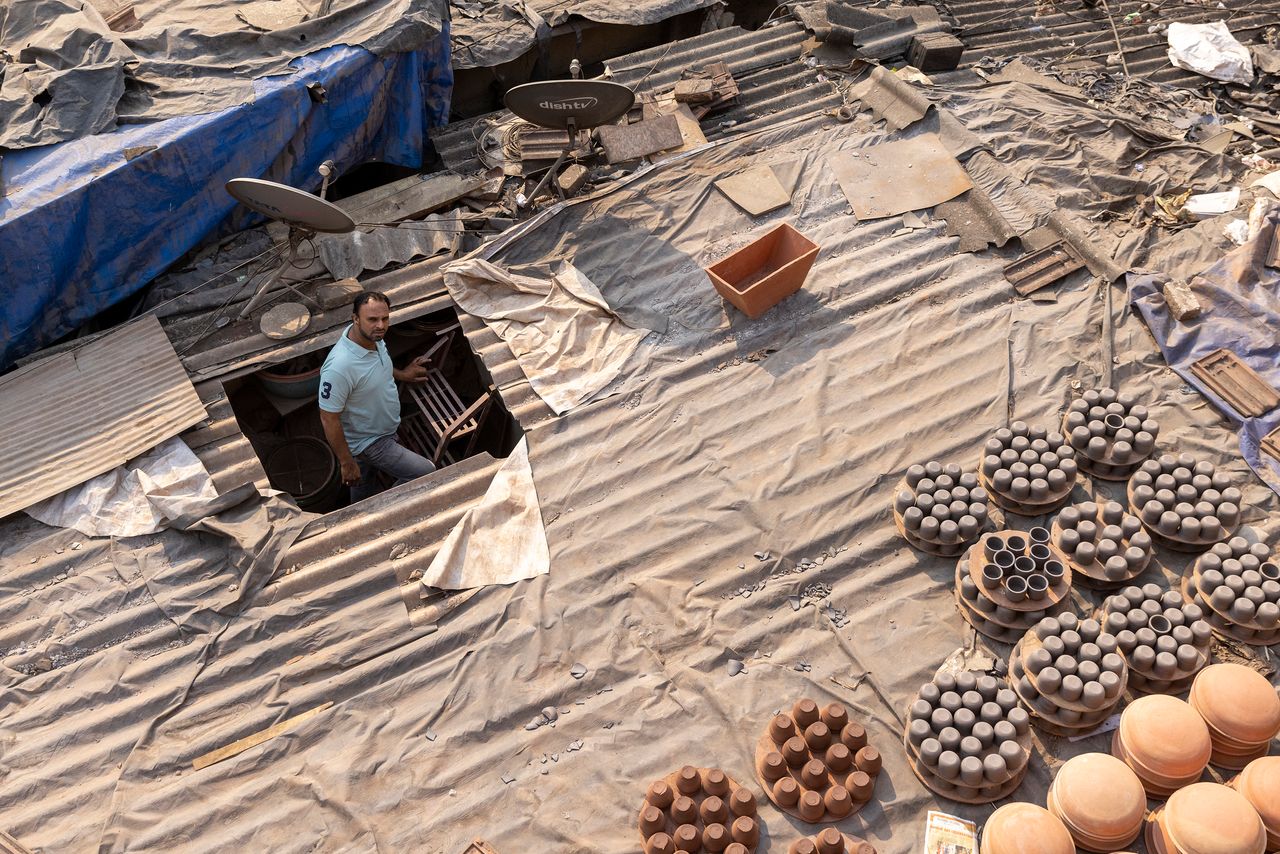
But many are worried about what the project portends for their future.
Malliga Gunashekaran, 47, who moved in 2008 to her current home in Dharavi, where she lives with her husband, son and mother-in-law, said she isn’t sure if they meet the eligibility criteria to get a free home. “There is tension,” she said.
Yusuf Galwani runs a family business with his two brothers in Dharavi, where they make earthenware by hand. His grandfather started out as a clay potter in Dharavi more than 100 years ago. He and his brothers have expanded the workshop in the space-starved slum by building one floor on top of another. They have built a kiln to fire the pottery on the fourth floor. They fear they may not get this much space in a redevelopment.
Mr. Galwani said that over the years he and his brothers have refused lucrative job offers, to continue their family craft. They want to expand their grandfather’s business to greater heights and can’t imagine doing it anywhere else, he said.
“We don’t want to leave Dharavi,” he said. “Our hearts won’t allow it.”
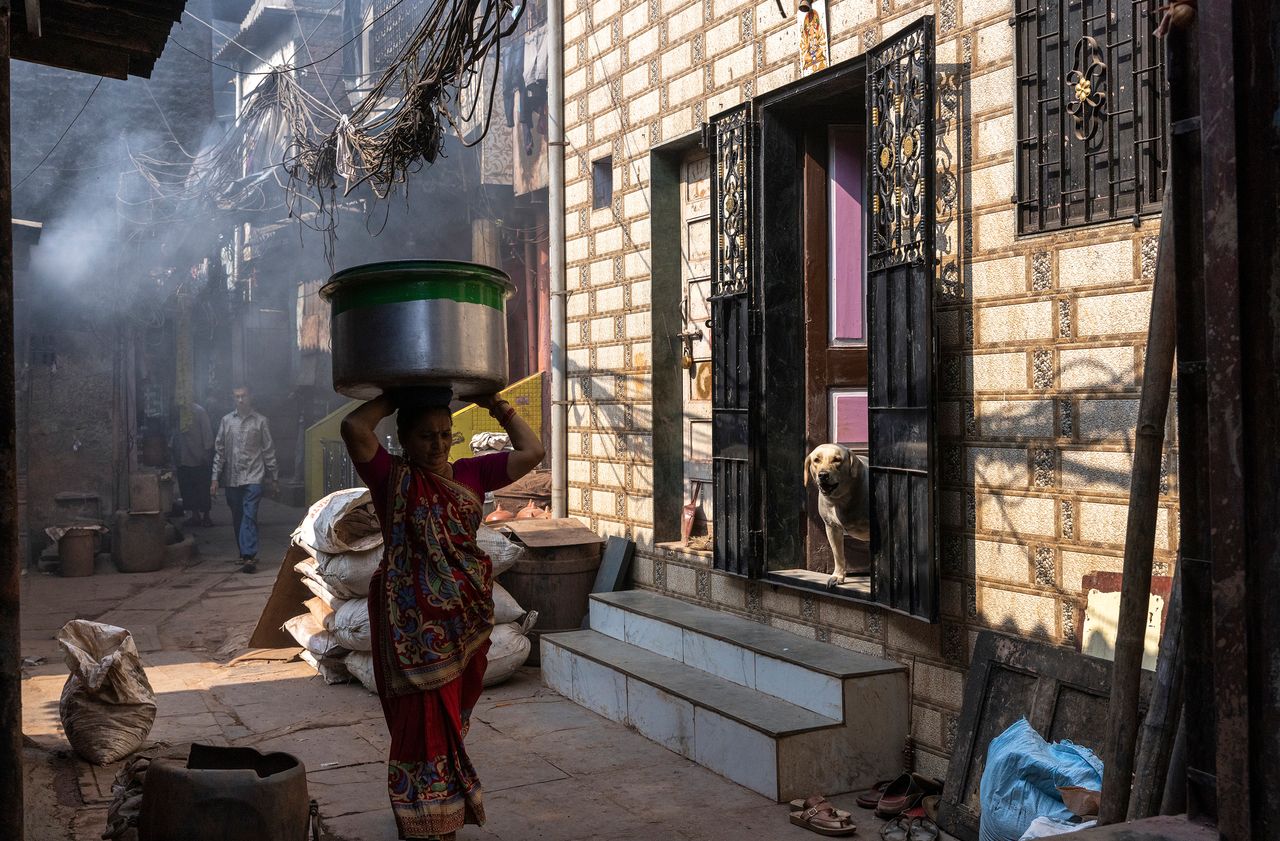
 Copyright 2020, Dow Jones & Company, Inc. All Rights Reserved Worldwide. LEARN MORE
Copyright 2020, Dow Jones & Company, Inc. All Rights Reserved Worldwide. LEARN MORE
This stylish family home combines a classic palette and finishes with a flexible floorplan
Just 55 minutes from Sydney, make this your creative getaway located in the majestic Hawkesbury region.
The Republican nominee says it would help bring down home prices, though these buyers account for a fraction of U.S. home sales
Former President Donald Trump said he would ban undocumented immigrants from obtaining home mortgages, a move he indicated would help ease home prices even though these buyers account for a tiny fraction of U.S. home sales.
Home loans to undocumented people living in the U.S. are legal but they aren’t especially common. Between 5,000 and 6,000 mortgages of this kind were issued last year, according to estimates from researchers at the Urban Institute in Washington.
Overall, lenders issued more than 3.4 million mortgages to all home purchasers in 2023, federal government data show.
Trump, the Republican presidential nominee, made his comments Thursday during a policy speech to the Economic Club of New York in Manhattan.
Housing remains a top economic issue for voters during this presidential election. Rent and home prices grew at historic rates during the pandemic and mortgage rates climbed to levels not seen in more than two decades. A July Wall Street Journal poll showed that voters rank housing as their second-biggest inflation concern after groceries.
Both major candidates for the 2024 presidential election have made appeals to voters on housing during recent campaign stops, though the issue has so far featured more prominently in Vice President Kamala Harris ’s campaign.
Trump has blamed immigrants for many of the nation’s woes, including crime and unemployment. Now, he is pointing to immigrants as a cause of the nation’s housing-affordability crisis. Yet some affordable-housing advocates and real-estate professionals said Trump’s mortgage proposal would fail to bring relief to priced-out home buyers.
“It’s unfortunate that given the significant housing affordability crisis that is widely acknowledged across most partisan lines, we are arguing about a minuscule segment of the market,” said David Dworkin, president of the National Housing Conference, an affordable-housing advocacy group.
Gary Acosta, chief executive of the National Association of Hispanic Real Estate Professionals, a trade organization, said, “It’s just another effort to vilify immigrants and to continue to scapegoat them for any issues that we have here in the United States.”
A Trump campaign spokeswoman didn’t immediately respond to a request for comment.
Undocumented immigrants in the U.S. can obtain an obscure type of mortgage designed for taxpayers without Social Security numbers, most of whom are Hispanic. The passage of the USA Patriot Act of 2001 allowed banks to use identification numbers from the Internal Revenue Service as an alternative to Social Security, extending a number of financial services to people without legal status for the first time.
Mortgage loans for undocumented immigrants are typically higher interest and borrowers include legal residents who have undocumented spouses, Acosta said. Lenders include regional credit unions and community-development financial institutions.
In his speech, Trump said that “the flood” of undocumented immigrants is driving up housing costs. “That’s why my plan will ban mortgages for illegal aliens,” he said.
Trump didn’t elaborate on how he would enact a ban on such loans.
Though mortgages for undocumented people living in the U.S. are relatively rare, residential real-estate purchases by foreign nationals are big business , especially in expensive coastal cities such as New York and Los Angeles. These sales have declined in recent years, however.
Close to half of foreign purchases are made by people residing abroad, while the other half are made by recent immigrants or residents on nonimmigrant visas, according to an annual survey by the National Association of Realtors. Many affluent foreigners buy U.S. homes with cash instead of obtaining mortgage financing.
In his Thursday speech, which focused mostly on other economic matters such as energy and taxation, Trump proposed other measures to bring down housing costs, including cutting regulations for builders and allowing more building on federal land. Similar ideas appeared in the housing policy outline Harris released in August .
The former president has spoken on housing-related issues in speeches at other recent campaign stops, including in Michigan last month, where he touted his administration’s 2020 overturn of a policy that had encouraged cities to reduce racial segregation .
“I keep the suburbs safe,” Trump said. “I stopped low-income towers from rising right alongside of their house. And I’m keeping the illegal aliens away from the suburbs.”
This stylish family home combines a classic palette and finishes with a flexible floorplan
Just 55 minutes from Sydney, make this your creative getaway located in the majestic Hawkesbury region.









